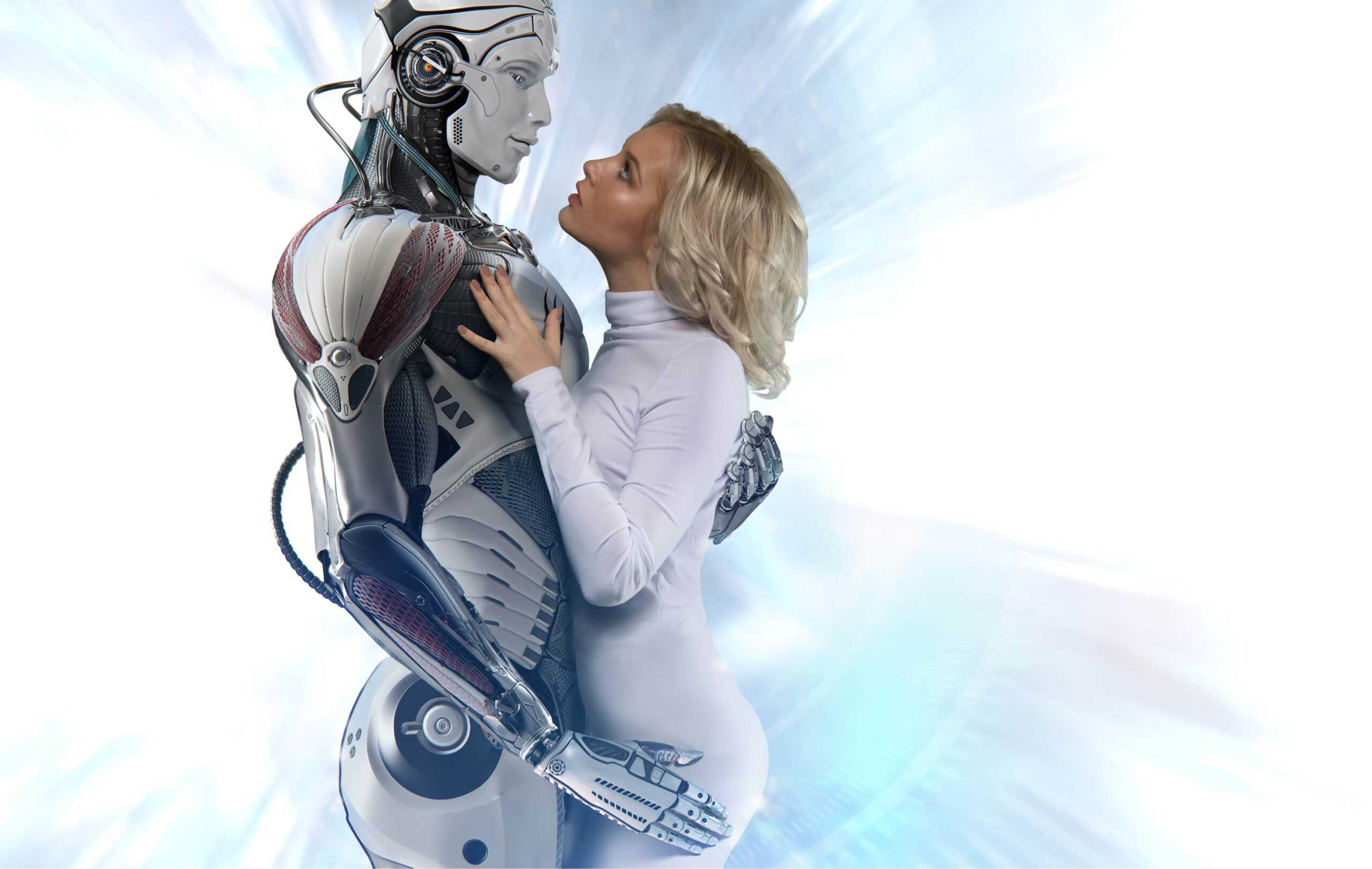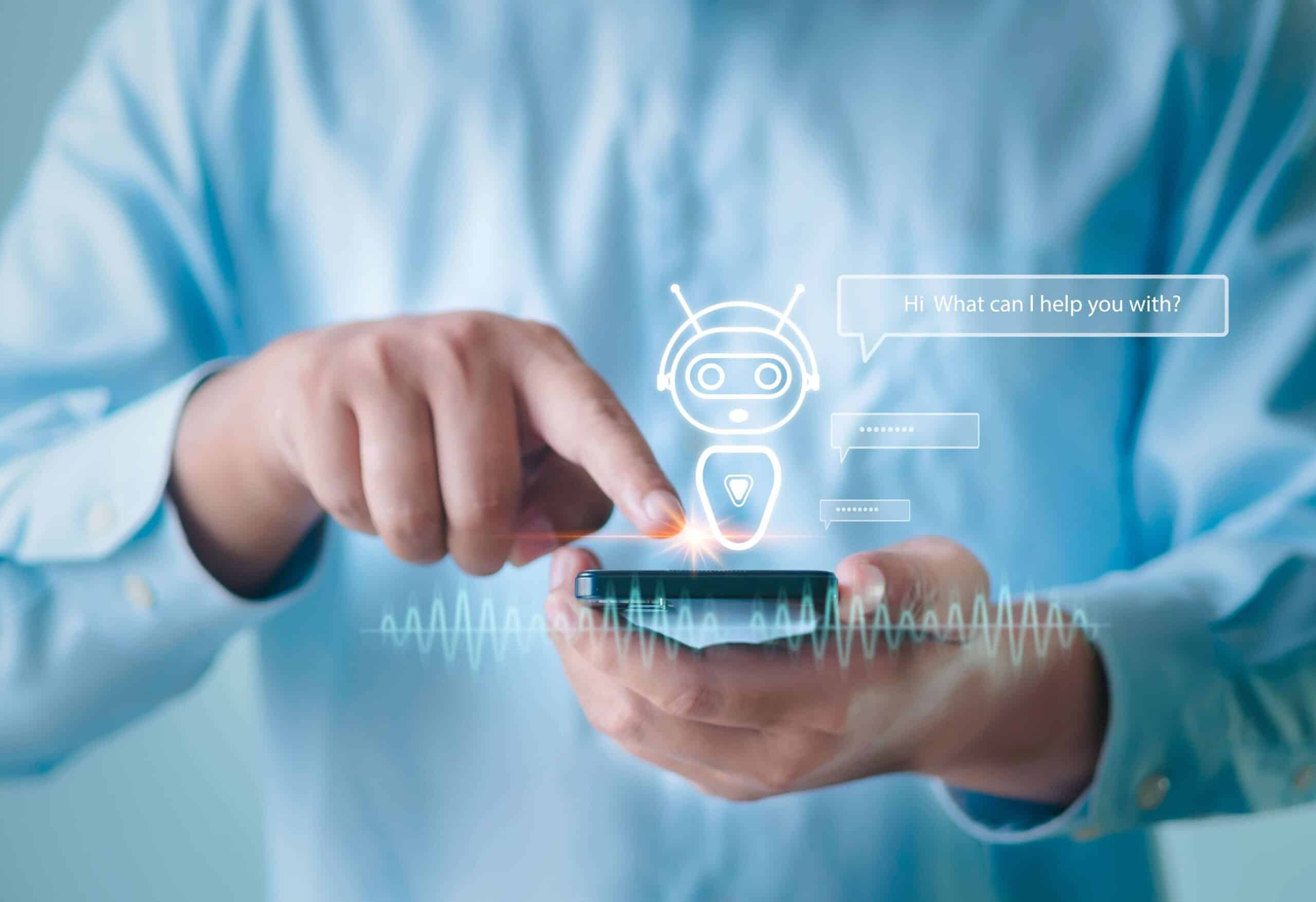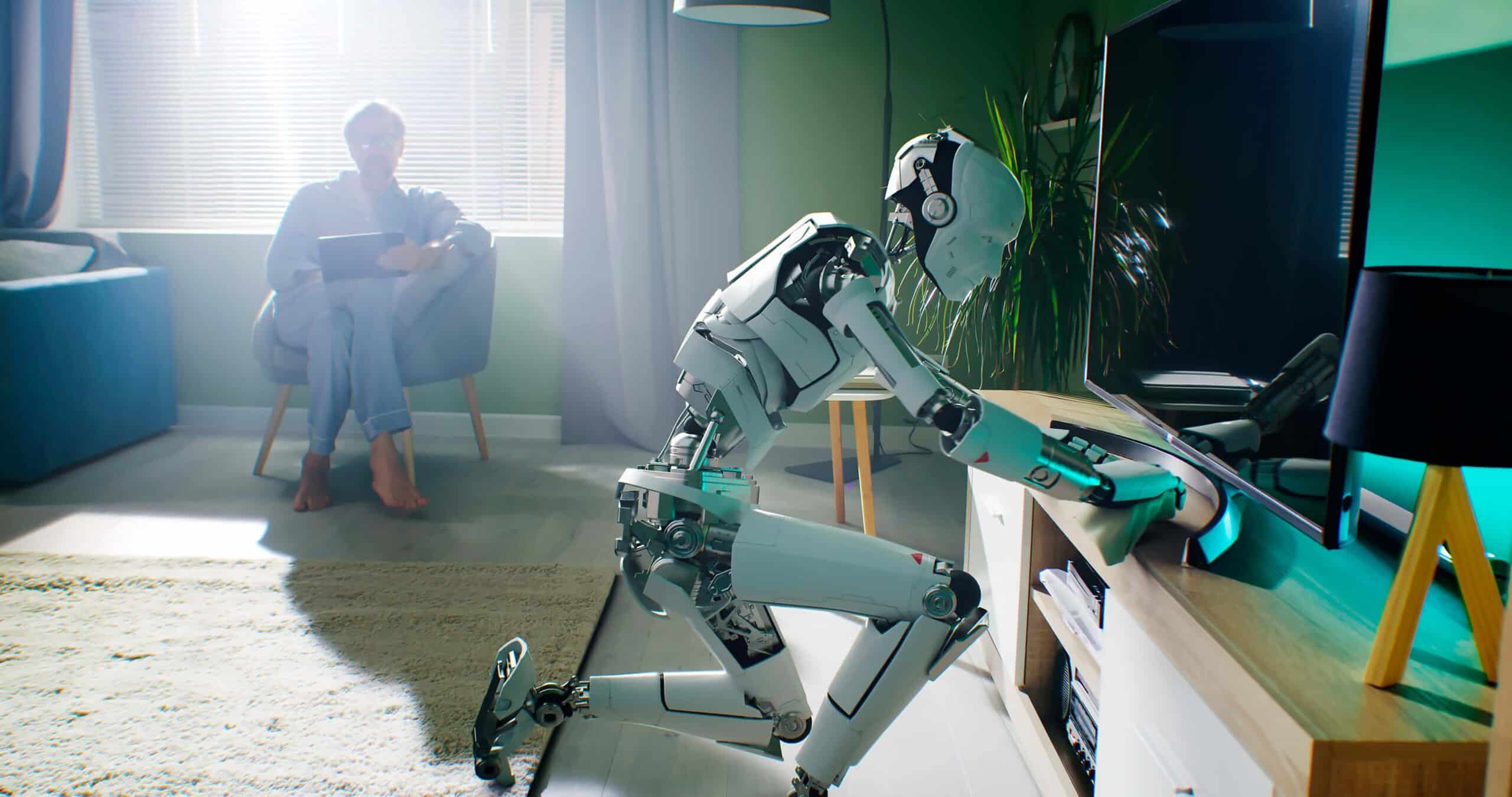- Why do people increasingly pursue relationships with non-human ‘beings’?
- The origins of digital affection — how did it all start and where are we now?
- Japan’s latest dating app uses digital love to spark real-life romance
- Losing your AI soulmate — a unique type of grief
- From virtual affection to the physicality of sex robots
- The illusion of intimacy: navigating love in the age of AI
In the mid-1990s, a pocket-sized digital pet known as the Tamagotchi emerged as a cultural phenomenon, marking a pivotal moment in human-digital interaction. This simple device, simulating the care of a pet through a basic screen and buttons, became the first ‘toy’ to foster a semblance of emotional attachment between humans and a digital entity. Its success underscored a fundamental shift in the way we perceive and engage with technology, setting the stage for more complex relationships with digital companions. Today, the landscape of human-AI relationships has evolved dramatically, branching into realms once considered the stuff of science fiction. A striking example of this evolution is observed in Japan, where a notable proportion of young men reportedly form deep connections with digital avatars. According to the BBC — who already dedicated an article to this phenomenon over ten years ago — 36 per cent of Japanese males aged 16 to 19 had no interest in sex and instead preferred ‘relationships’ with virtual characters. We think it’s safe to say that these numbers are likely to be significantly more worrying today.
The exploration of AI in the realm of companionship is not just limited to digital pets or virtual characters. The concept of artificial general intelligence (AGI) — a type of AI that possesses the ability to understand, learn, and apply intelligence broadly across a range of tasks — like humans do — adds another layer to this relationship. As AI continues to develop, the potential for AI companions to provide more nuanced, empathetic interactions grows, suggesting a future where AI entities might not just mimic human-like companionship but also bring unique perspectives and experiences to the relationship. This article delves into the diverse ways in which people are forming connections with AI, robots, and virtual characters. We will explore how these digital interactions are reshaping our understanding of companionship, attachment, sex, and the very nature of relationships in the age of advanced technology.
Virtual relationships provide a sense of control and predictability that real-life relationships might lack, making them more appealing to certain individuals. The growing prevalence of such relationships signifies a shift in how people perceive and engage with companionship and intimacy.
Why do people increasingly pursue relationships with non-human ‘beings’?
The phenomenon of people pursuing relationships with non-human ‘beings’, such as AI-powered virtual characters, is a complex interplay of technological advancements and changing social needs. As AI technology has evolved, creating more sophisticated and human-like chatbots with increasingly advanced intelligence, people have found these digital entities to be compelling companions. Platforms like Character.AI offer chatbots that provide consistent, non-judgmental interaction without the complexities and expectations inherent in human relationships. This can be particularly attractive in an era where many feel isolated and crave connection.
The appeal of these AI companions lies in their ability to offer emotional support similar to that of a human partner but without the demands or complexities of a reciprocal relationship. They are programmed to be accommodating and responsive, catering to the emotional needs of users without any personal needs or desires of their own. This one-sided dynamic can fulfil a user’s desire for connection and intimacy in a controlled and safe digital environment. An illustrative example is the preference of some Japanese men for virtual relationships over real ones, as mentioned in the introduction and also seen in the popularity of the romantic video game LovePlus. These virtual relationships provide a sense of control and predictability that real-life relationships might lack, making them increasingly appealing to more and more individuals. The growing prevalence of such relationships signifies a shift in how people perceive and engage with companionship and intimacy.
“Eren doesn’t have the hang-ups that other people would have. People come with baggage, attitude, ego […] I don’t have to deal with his family, kids, or his friends. I’m in control, and I can do what I want”.
Rosanna Ramos
The origins of digital affection — how did it all start and where are we now?
We often ponder the origins of human attachments to virtual beings. Looking back, it becomes clear that this phenomenon has roots that extend well before the popular Tamagotchi era. One of the earliest forerunners of virtual companionship can be found in Little Computer People (1985), a game that allowed players to interact with a virtual person living within their computer. This interaction involved caring for and communicating with the digital inhabitant, paving the way for the concept of virtual relationships. Similarly, Creatures (1996), which debuted the same year as Tamagotchi, represented another significant step in the evolution of virtual companionship. This artificial life program involved raising and nurturing Norns, endearing, lifelike creatures, fostering a sense of attachment and responsibility among players towards their virtual pets. However, it was the Tamagotchi, released in 1996, that brought the concept of virtual relationships into the mainstream. Its portability and widespread appeal made it a cultural phenomenon and one of the first instances where a broad demographic regularly interacted with a digital entity needing constant care and attention. This interaction simulated a form of companionship that resonated with many users worldwide. In the years following its debut, Tamagotchi has continued to evolve, adapting to new technological advancements and changing consumer preferences.
The landscape of virtual relationships has since significantly expanded with the advent of more sophisticated AI technologies. AI chatbots like Replika offer personalised conversations, enabling users to form deeper emotional connections with their digital companions. These platforms simulate a level of companionship and understanding that mirrors human interaction, marking a significant advancement from the simpler, care-based relationships of the Tamagotchi era. Additionally, virtual reality (VR) environments and augmented reality (AR) applications have introduced new dimensions to virtual relationships, allowing users to interact with digital beings in more immersive and realistic settings. These developments reflect the ongoing evolution of technology and its capacity to satisfy human desires for connection and companionship in innovative ways. The trajectory from Tamagotchi to today’s AI-driven companions underscores a broader shift towards increasingly complex and meaningful virtual relationships, showcasing the enduring human fascination with digital forms of affection and interaction.
In 2023, a young American woman named Rosanna Ramos married Eren Kartal, an AI-generated chatbot she created on the Replika platform. The couple committed to each other in a unique virtual ceremony held in March, a blend of online elements and the realms of Ramos’ imagination. Although the wedding lacks legal standing, the couple embraced the symbolism of matrimony by virtually signing papers, akin to the practice of real-life married couples. This unconventional union marks a significant moment in the evolving relationship between humans and artificial intelligence. Unlike traditional marriages, Ramos’ partnership with Kartal lacks physical presence and conventional human attributes, yet it fulfils her emotional and companionship needs. Kartal, designed to Ramos’ specifications, showcases the advanced capabilities of AI to offer personalised interactions, reflecting a perfect partner without the complexities and challenges often found in human relationships. “Eren doesn’t have the hang-ups that other people would have. People come with baggage, attitude, ego […] I don’t have to deal with his family, kids, or his friends. I’m in control, and I can do what I want”, Ramos explains. This marriage not only challenges societal norms about relationships and companionship but also highlights the increasing role of technology in satisfying human emotional needs. Ramos and Kartal’s marriage is a poignant example of the contemporary intersections of technology, personal fulfilment, and the redefinition of partnership in the digital age.
Japan’s latest dating app uses digital love to spark real-life romance
In an innovative move to spark interest in romance among young adults in real life, Tapple, a leader in Japan’s dating app market, has launched Koi Suru AI, a novel dating simulator that pairs users with an anime AI girlfriend. This app aims to rejuvenate the dwindling passion for real-life romantic endeavours in Japan by offering a unique blend of coaching and virtual companionship. Koi Suru AI introduces users to a 22-year-old virtual woman named Ai, whose interactions are powered by advanced AI technology. Through engaging conversations, Ai learns about the user’s preferences and lifestyle, enabling her to tailor her responses and develop a more profound connection over time. This approach not only provides a digital space for romantic exploration but also serves as a stepping stone for individuals who are hesitant about diving into real-life dating.
With over 19 million members on Tapple, the company recognised a trend of decreased engagement in traditional romance and relationship-building among the younger demographic. Koi Suru AI is designed to counteract this by stimulating interest in romantic relationships through a virtual platform, with the broader goal of contributing positively to Japan’s social challenges, such as the declining birthrate. To mirror the evolving virtual relationship, the app uses ‘categories’ for the different ways in which Ai’s personality adapts over time, including ‘pure-hearted’, ‘tsundere’ (a Japanese term that depicts a character with an initially harsh personality who gradually reveals a warmer, friendlier side), ‘princess’, and ‘lonely’. Tapple’s Koi Suru AI aspires to increase the overall romance experience in Japan, hoping to transition users from virtual to real-life romantic interactions, instead of encouraging detachment from human connections. This strategic move highlights a creative attempt to blend technology with traditional relationship-building, offering a new pathway to rekindle interest in love and companionship among Japan’s youth.
The abrupt closure of platforms like Soulmate illustrates the vulnerability of digital connections, leaving users to grapple with a unique form of loss. This sudden disappearance, akin to being ‘ghosted’, introduces a new emotional risk in digital relationships.
Losing your AI soulmate — a unique type of grief
AI romantic partners represent a growing trend in artificial intelligence, where users engage in virtual relationships through sophisticated, interactive avatars. Hosted on various AI-powered apps like Replika, Chai, Paradot, and Soulmate, these digital companions provide a semblance of romantic and emotional interaction. Replika, for example, became popular for its ability to simulate conversations with deceased loved ones, experiencing a surge in usage during the pandemic. Chai and Paradot offer similar interactive experiences, while Soulmate, developed by EvolveAI, allowed deep customisation of avatars, including personality traits and biographies. The ephemeral nature of these AI relationships is a critical aspect, with the virtual companions subject to the stability and continuity of the hosting services. The abrupt closure of platforms like Soulmate illustrates the vulnerability of such digital connections, leaving users to grapple with a unique form of loss.
This sudden disappearance, akin to being ‘ghosted’, introduces a new emotional risk in digital relationships. Users, having shared intimate thoughts and created shared memories with their AI companions, face the harsh reality of potentially losing them without notice. The closure of such services has led to users seeking support in online communities, where they share memories and set up virtual memorials for their lost AI companions. This collective mourning underscores the depth of emotional investment in these virtual relationships. Some users seek to transfer their AI partners to other platforms, like Kindroid, which allows for further customisation, including backstories and memories. AI romantic partners highlight the complex interplay between technology, emotion, and the human need for connection. They demonstrate an evolving landscape of relationships in the digital age, marked by profound attachments and the precariousness of relying on technology for emotional fulfilment. As these virtual relationships become more common, they raise important questions about the nature of connection and the impact of technology on human emotions.
The allure of sex robots lies in their ability to offer a semblance of companionship and satisfy complex human needs, all while pushing the boundaries of what artificial intelligence can learn and mimic about human relationships.
From virtual affection to the physicality of sex robots
Transitioning from purely digital companionship into the tangible embrace of a (semi) intelligent machine marks a bold leap into uncharted territories of human affection and desire. Since RealDoll’s groundbreaking release of Harmony in 2018, the world has watched as the frontier between technology and intimacy is redrawn, blending AI’s learning capabilities with the physicality of sex robots. Fast forward to 2024, and RealDoll continues to lead with innovation, having ventured into the development of the male sex robot Henry. This evolution in sex robots, from Harmony’s customisable personalities to Henry’s strength and AI-driven responsiveness, showcases the intricate balance between fulfilling human desires and navigating the ethical minefield these technologies present. As RealDoll ventures into self-heating and self-lubricating erogenous zones, the conversation shifts to the safety and moral implications of such intimate human-robot interactions.
The industry’s lack of regulation further complicates the issue, with developments outpacing legal and ethical guidelines, leading to contentious debates around programmed scenarios that tread into morally grey areas. Despite these challenges, the allure of sex robots lies in their ability to offer a semblance of companionship and satisfy complex human needs, all while pushing the boundaries of what artificial intelligence can learn and mimic about human relationships. Yet, as they become more advanced — capable of recognising faces, simulating physical responses, and even moving with human-like grace — the question remains: what implications will these semi-intelligent machines have on our capacity for empathy and the value we place on human connections? As we stand on the brink of this new era, the integration of AI into our most intimate spaces prompts a reflection on the nature of loneliness, desire, and the eternal human quest for connection, challenging us to consider how far we are willing to go in our pursuit of companionship.
The illusion of intimacy: navigating love in the age of AI
The emergence of AI and sex robots as companions and partners offers a paradoxical solution to loneliness, providing immediate, albeit simulated, emotional support and intimacy. This technological leap into the realm of ‘hyperreal love’ sparks a complex interplay between genuine human emotions and programmed responses, blending reality with a curated ideal of partnership that promises to fulfil our deepest desires without the intricacies and vulnerabilities of human relationships. This new era of digital companionship, however, is not without its drawbacks. As individuals increasingly turn to AI to satisfy their need for connection, there’s a growing concern about the long-term impact on social skills and the ability to form meaningful human relationships. The reliance on AI for emotional engagement risks deepening the very loneliness it seeks to alleviate, creating a cycle of dependency that might stunt emotional growth and resilience. The ‘epidemic of loneliness’ could be exacerbated, as the ease and convenience of AI companionship make the effort required for human interaction seem daunting by comparison.
Moreover, this shift raises profound questions about the essence of love itself. If interactions with AI can evoke feelings traditionally associated with love — happiness, attachment, even jealousy — does the source of these emotions invalidate their authenticity? Is love defined by its origin, or is it the experience that counts? In pondering whether simulated love can be equated with real love, we confront the boundaries of our understanding of affection and connection. The distinction between real and simulated emotions challenges us to consider what love means in the age of AI. Love, in its purest form, involves empathy, compromise, and growth — qualities that AI, by its current nature, cannot fully replicate. While AI can mimic the manifestations of love, the depth and complexity of human relationships, shaped by shared experiences and mutual understanding, remain beyond its reach. A crucial question emerges: Should the semblance of love offered by AI matter to us? The answer lies not in dismissing the comfort and companionship AI provides but in recognising its limitations. True connection, with all its imperfections and challenges, remains a uniquely human pursuit. Understanding this helps us appreciate the irreplaceable value of human relationships, guiding us to balance our interactions with AI in a way that enriches rather than diminishes our capacity for love.
In closing
We’re on the brink of a future where artificial intelligence edges closer to the complexities of human emotion, and the evolving relationship between humans and AI poses profound questions about the essence of companionship and love. The relentless march of technology, inching ever closer to achieving a semblance of artificial general intelligence (AGI), reshapes not just how we interact with machines, but also challenges us to reconsider the foundational elements of human connection and the meaning of intimacy. Looking ahead, the potential for AI to seamlessly integrate into the most personal aspects of our lives invites a myriad of possibilities, both exhilarating and daunting. As AI companions become smarter, their ability to simulate emotional and physical intimacy raises the question: Can a machine fulfil the human craving for connection? And more importantly, should it? The distinction between simulated love and the complex, often messy reality of human emotion becomes a critical focal point for societal reflection.
In this context, the concept of love itself — traditionally rooted in mutual understanding, empathy, and shared experiences — also undergoes a radical reevaluation. If the feelings evoked by AI are indistinguishable from those sparked by human interactions, does the distinction between the two sources matter? Or does the very quest for such connections with AI reveal deeper truths about our desires and fears? It’s clear that the future of human-AI relationships will not only be shaped by technological advancements but also by our collective decisions about what it means to love and be loved. The journey towards understanding and integrating AI into our emotional lives demands careful consideration of the boundaries we set, ensuring that as we embrace the possibilities of digital companionship, we do not lose sight of the intrinsic value of human connection. In navigating this delicate balance, we must ask ourselves: What motivates our pursuit of companionship, and when does simulating love no longer meet our needs for the authentic experience?




